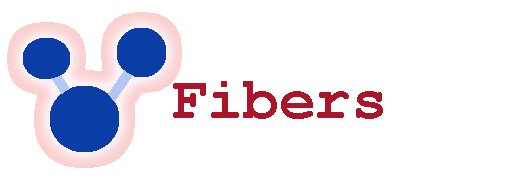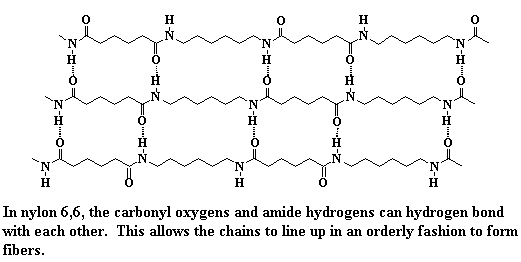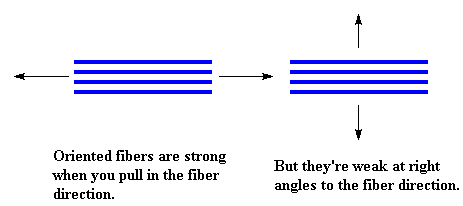

Keywords
crystal,
hydrogen bond,
secondary interaction
That's great. So what's a polymeric fiber? Since you asked, a polymeric fiber is a polymer whose chains are stretched out straight (or close to straight) and lined up next to each other, all along the same axis, kind of like you see in the picture.

Polymers arranged in fibers like this can be spun into threads and used as textiles. The clothes you're wearing are made out of polymeric fibers. So is carpet. So is rope. Here are some of the polymers which can be drawn into fibers:
It's important to point out that fibers are always made of polymers which are arranged into crystals. They have to be able to pack into a regular arrangement in order to line up as fibers. (In fact, fibers are really a kind of crystal, a really long kind of crystal.) We can show this by taking a closer look at the way nylon 6,6 packs into a crystalline fiber.

Those hydrogen bonds and other secondary interactions between the individual chains hold the chains together very tightly. So tightly that they don't particularly like to slide past one another. This means that when you pull on the nylon fiber it won't stretch very much, if at all. This is why fibers are good for using as rope and thread.
What?
You want more?
In that case I suppose I can tell you that fibers have their drawbacks. While they have good tensile strength, that is, they're strong when you pull or stretch them, they usually have bad compressional strength, that is, they're weak when you try to squash or compress them. Also, fibers tend to be strong only in one direction, the direction in which they're oriented. If you pull in them in the direction at right angles to their orientation, they tend to be weak.


|
Return to Level Three Directory |

|
Return to Macrogalleria Directory |
